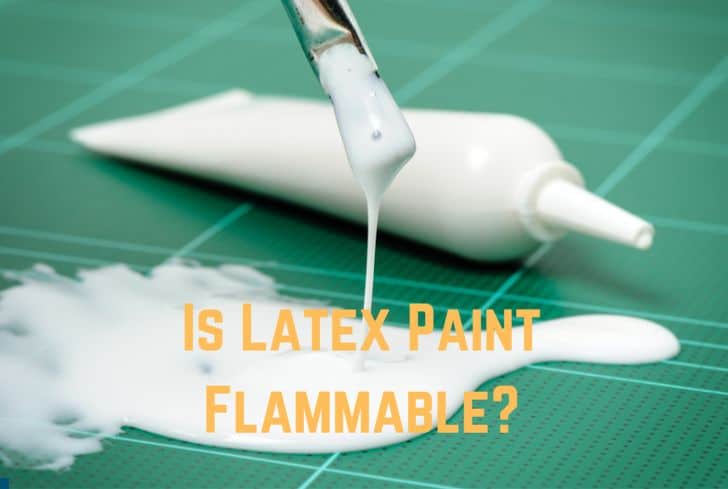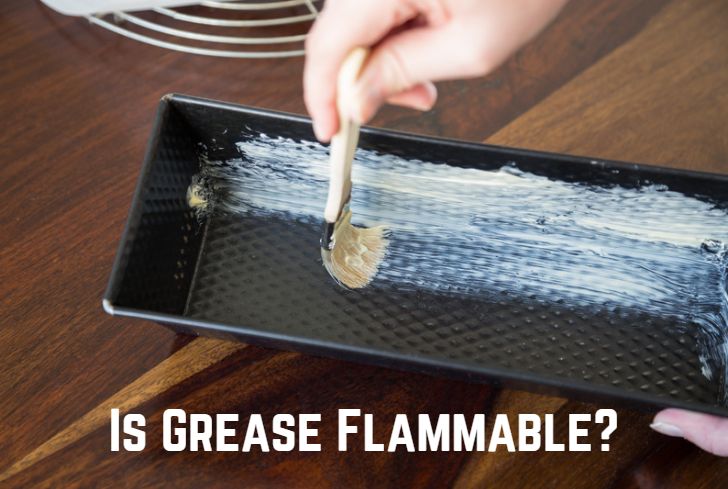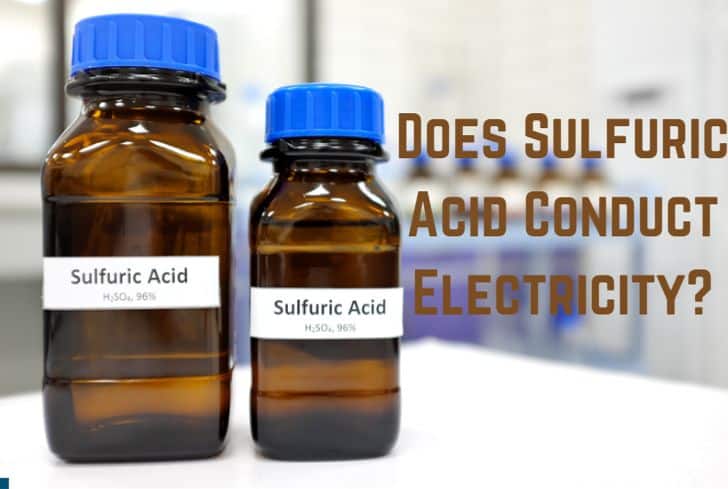Is Latex Paint Flammable? (No)

You have some leftover latex paint after painting your house recently. You immediately think about storing it in your garage. However, you are concerned that the paint can start a fire because of the car fumes. Is latex paint flammable, though?
We answer that question in this article so that you can decide whether your garage is the ideal location for paint storage. Additionally, you’ll learn whether latex paint expires, is toxic, a hazardous waste, or biodegradable. Lastly, you’ll know whether latex paint can withstand heat or if its fumes are explosive.
Does Latex Paint Burn in a Fire?
No. Latex paint is not flammable. It does not burn in a fire. Water serves as latex paint’s solvent, making it water-based and impossible to ignite. Don’t be fooled by the paint’s name; it does not contain rubber or latex. Most latex paints don’t use flammable solvents, lacking compounds that can support a flame.
Another reason why latex paint doesn’t burn easily in a fire is that its flash point is above 200° F (93º C). However, if you are using latex paint spray cans, don’t try to start a fire. Chemicals are added to make spray paint sprayable, and these compounds are flammable.
Is Latex Paint Biodegradable?
Latex paint is biodegradable. It doesn’t have as many chemical additives as other types of paint. Latex paint is environmentally friendly because of low VOCs. Since latex paint is water-based, you can wash it away with water. Cleaning latex paints is more environmentally friendly than oil paints, which require chemicals to dissolve the solvents.
According to Environmental Protection Agency (EPA) guidelines, the VOC content rate of latex paints should not be more than 250 grams per liter. Individual latex paint varieties, however, may still be hazardous. Therefore, it is wise to approach all paints as potentially harmful.
Latex paints contain some chemicals that are hazardous to aquatic life. Unfortunately, it’s possible to find latex paint that contains lead or chemicals added to prevent mildew. Solvents containing hazardous compounds will be present in other latex paints.
Is Latex Paint Hazardous Waste?
Latex paint is not a hazardous waste. It will break down naturally since water is the primary thinner. The paint also contains plastic resin made of acrylics or polyvinyls instead of rubber. Don’t throw out latex paints in liquid form, though, as some might contain mercury. The best approach is first to dry it out.
When disposing of latex paints, avoid doing the following:
- Burning the paint.
- Throwing out latex liquid paint cans for routine trash collection.
- Dumping the leftover latex paint in the ground alongside creeks, rivers, and drains.
You will contaminate the land, air, and groundwater if you dispose of your latex paint in any of the methods mentioned above. The food chain will eventually become exposed to these toxins.
Once you’re done painting, you can use latex paint on another project. Try painting objects in the other rooms with the remaining paint to create a color flow in your home. Picture frames, outlet covers, and clay planters are a few items you can paint. You can also paint the old furniture with the remaining paint.
If none of the methods mentioned above methods appeal to you and no one in your neighborhood or circle of friends wants the paint, you can follow these steps:
- The first step is to dry off the paint in a secure location away from children and pets.
- Take off the lid and stir every so often to hasten the drying process.
- Place the dry paint in the trash can.
Is Latex Paint Toxic?
Mercury and silver are two toxic metallic pigments used in latex paint. Some latex paints might have trace levels of formaldehyde and ammonia. Regrettably, VOCs are also present in very small concentrations in latex paints. Latex paint contains 1 to 10 times as many volatile organic compounds (VOCs) as solvent paints, which is enough to render it toxic.
Three key components of latex paint—two of which may or may not be toxic—are present. Let’s find out more about the elements that make latex paint toxic:
- Solvent
Water is not toxic and serves as the latex paint’s solvent. However, water is mixed with glycol or ether to emulsify the water binder. Glycol is poisonous, especially when consumed in excessive doses.
Although glycol is absent from dry paint, you will inhale it as you spread the wet paint. If you breathe it in, you might experience headaches, mild nausea, a sore throat, and dizziness.
- Binder
Some of the binders in use in latex paint include polyvinyl acetate (PVA), acrylic polymers, and copolymers. Both of these binders are non-toxic. However, PVA irritates the skin. Contrary to popular belief, latex paint is not bonded by natural latex rubber.
The polymer binder produces a film that resembles natural latex rubber in latex paints. Nearly all water-based paints have a binder made of latex. When you apply paint, water vapor escapes from the coating.
- Pigments
Iron oxides, zinc oxide, carbon black, and white titanium dioxide are the most common pigments in latex paints. Inhaling iron dioxide is known to have adverse effects. Titanium dioxide is a known carcinogen.
- Additives
In addition to the three major elements mentioned above, latex paints contain additives. One of the mildewcidal components of paint is mercury. Mercury was prohibited as an additive in interior paints due to this. However, it could still be present in exterior paints.
Triclosan, calcium carbonate, driers to hasten drying, and other chemicals are also frequently used in latex paints.

Can Latex Paint Withstand Heat?
The temperature range of latex paint is between 10°C and 29°C (50°-85°F). Beyond that temperature, your paint will dry out quickly. When latex paint dries too fast, it bubbles and blisters, which causes peeling when the paint cures. Due to water being its primary solvent, latex paint dries quickly. Fast-drying paint will make painting difficult for you.
It is advisable to avoid painting in direct sunshine, even when the temperature is within the suggested range. The paint will likely crack, flake, or peel. Its vapors are also dangerous and toxic.
Some say latex paint can withstand temperatures as high as 180° F (82°C). Only acrylic paints, though, are resistant to temperatures that high. That is solely due to confusion over latex and acrylic paints. The primary distinction is that latex paints are water-based, whereas acrylic paints are chemical-based.
Does Latex Paint Smell?
Although not as intensely as oil paint, latex paint does have a smell. That shouldn’t stop you from using the paint, though. Latex paints need only three to four hours for the paint to dry and stop smelling. Latex paint is preferable if you want to paint your house while residing there.
You must remember that latex paints still contain trace levels of VOCs. These substances become gaseous at ordinary room temperatures. You should wait until the paint has thoroughly dried rather than risk sleeping in a freshly painted room. You can get headaches, nausea, or nasal irritation due to the paint’s smell.
After painting your room, you should do the following to get rid of the small amounts of VOCs in latex paint:
- While the paint is drying, ventilate the space well.
- Put water in buckets and keep them in the room. Water absorbs the vapors, allowing the fumes to escape the room faster. When you are ready to use the room, remove the water buckets.
- Light candles in the room. The candle flames will burn the VOCs. You must use caution when using this approach, and you must leave the burning candles unattended.
Does Latex Paint Expire?
Yes, latex paint eventually goes bad. How long it will take before the paint expires will depend on the storage conditions. Latex paint cans can last up to ten years if they are brand new or unused. However, it can last longer if you don’t expose the paint to air. Latex paint will keep the same ratio of liquids to semi-solids when you store it properly.
Even if the paint elements might have separated over time, they can still blend well. But the paint shouldn’t have frozen during storage to remain usable. Additionally, you shouldn’t have exposed the paint to extreme heat.
There is a chance that thick skin has developed if you had opened the paint can previously. You should take the skin out before stirring the paint. The paint is still usable if it blends smoothly. But you should strain it first to eliminate any lumps that might have developed due to high temperatures.
Here are several symptoms that will notify you that your paint has expired:
- A repulsive or rotting odor.
- The paint has passed the can’s stated expiration date.
- The paint can has mold.
- The paint doesn’t revert to its previous shade.
- When you stir it, the clumps don’t mix back together.
- Put the paint in a different tidy container. Look at the bottom of the old container to see if a layer has settled or cemented. If the layer does not blend back into the paint, your latex paint is no longer good.
Are Latex Paint Fumes Explosive?
Since water serves as the paint’s solvent, latex paint fumes cannot be explosive. Also, a flashpoint above 200° F makes an explosion impossible. However, there is a good probability of an explosion if the latex paint is in a spray can and you heat the can. Therefore, the presence of water will prevent the likelihood of latex paint fumes exploding.
While the fumes from wet latex paint won’t explode, the same cannot be true for dry latex paint. Latex paint that has dried will explode if it is lit.
Conclusion
Latex paint has good qualities that make it easier to store. It does not burn in a fire, is biodegradable, and is not hazardous waste. However, it cannot withstand high heat, so you can’t store it in an area with high heat.






